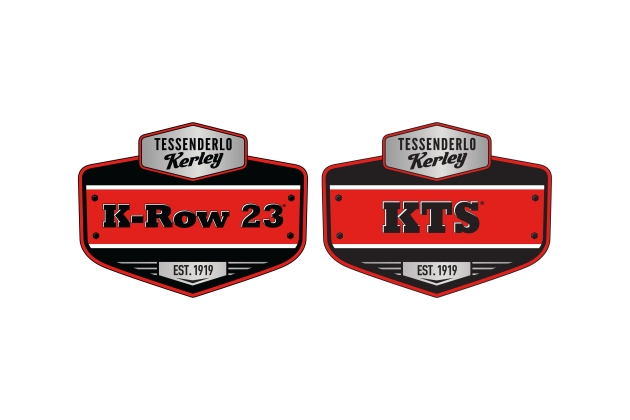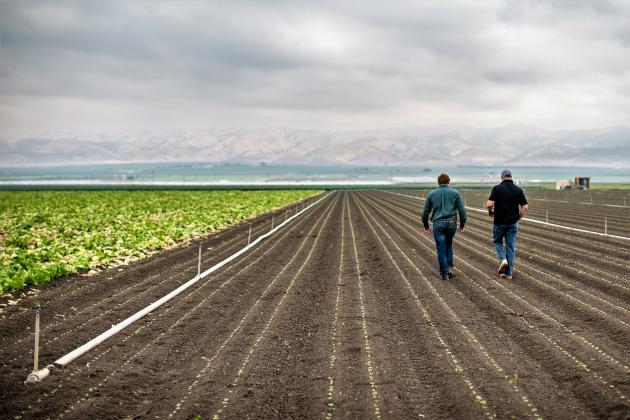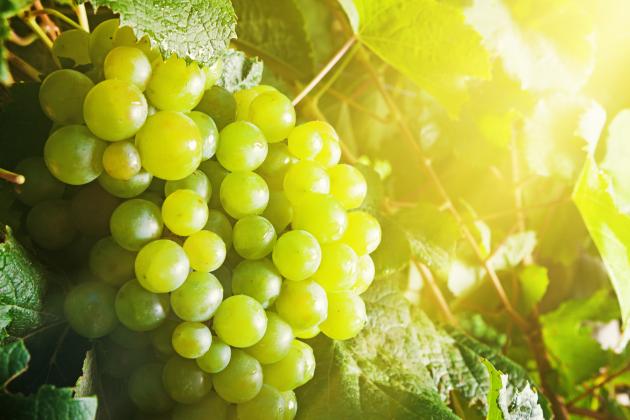
Grapes
Developing a proper nutrient program for a vineyard is an important task that has a decisive effect on the yield and quality of the grapes at harvest. A good fertilization program takes into consideration the balance of providing nutrients in the amount needed, at the proper timing based on the crop growth stage. While the goals are slightly different based on the type of grape being grown (i.e. wine grapes, table grapes, or raisin grapes), the general guidelines in developing a nutrient program will be similar.
Our Crop Vitality product portfolio will successfully address your crop nutrition needs by providing immediately available nutrients to the grapevine. Here are some suggestions for using Crop Vitality products in your operation:
Since many vineyards are setup with micro-irrigation systems (i.e. drip, microsprinklers), liquid fertilizers are an ideal source of plant nutrition. By injecting nutrients through the irrigation system, fertilizer applications can be applied directly to the rootzone. Additionally, nutrients can be delivered at the ideal timings based on nutrient needs throughout the growing season.
-

Nitrogen (N)
Compared to many permanent crops, grapevines have a lower N fertilizer requirement. Nitrogen should be applied to ensure an adequate N supply during growth and development. However, high levels of available nitrogen later in the summer should be avoided, since excessive N might encourage late season shoot growth, delay maturity, and promote immature canes.
In the early season, N-Sure can be blended with another nitrogen source like urea solution or UAN-32 to provide quickly available N with the slow-release nitrogen from N-Sure, and then applied through the irrigation system. N-Sure can also be applied via foliar applications with fungicides and insecticides to supply smaller amounts of N directly to the leaf tissue.
-

Potassium (K)
Potassium plays a role in both sizing of berries and increasing brix. K is also important in regulating water and potentially mitigating drought stress. Potassium demand is highest between bloom and veraison. During this time 60% of total K is taken up by the plant. Postharvest can be another important period where 15-20% of total K is taken up and then stored for the following season.
KTS and K-Row 23 are both excellent source of potassium for grapevines. KTS provides both K and sulfur (S) in the thiosulfate form. Thiosulfate has been shown to help improve availability of nutrients like phosphorous and micronutrients like manganese, zinc, and iron. Thiosulfate can also help with lowering soil pH when the pH of the soil is higher than 7.0. K-Row 23 contains half of the sulfur compared to KTS, so it is a good choice in some wine grape varieties where sulfur may be a quality concern. K-Row 23 also has higher application rates, allowing for more flexibility in applications of K and it does not acidify the soil, and so is a good source of K in vineyards with soil pH less than 7.0.
-

Calcium (Ca)
Calcium is not a mobile nutrient, and so timing applications to important growth stages becomes critical.
CaTs is a source of soluble calcium that is readily available to the plant. Timing calcium applications to late bloom and early fruit set, ensures adequate calcium levels in the forming fruit. CaTs is also an effective soil amendment for increasing water infiltration. Applications of CaTs in-season have been shown to improve the soil physical properties and improve water movement into the soil.
-

Magnesium (Mg)
Magnesium is directly involved in many physiological and biochemical processes in the grapevine, including photosynthesis. Magnesium deficiency is common in grapes and can lead to reduced yield and quality.
MagThio is a readily available source of magnesium. Applying MagThio early in the season can help to reduce the chance of magnesium deficiency later in the growing season. If petiole samples show low Mg levels, apply MagThio to increase Mg in the tissue.
Sulfur (S)
Sulfur is an essential nutrient in crop production; serving many functions in the plant, including: formation of amino acids and proteins, chlorophyl production and activating certain plant enzymes important to physiological functions. Sulfur is not often deficient in vineyards, however, if petiole or tissue samples indicate a sulfur deficiency, Thio-Sul, KTS, CaTs, MagThio and K-Row 23 can all be used to provide readily available sulfur for the vine.
-
-

Additional Learning
Check out our library of content geared towards teaching the best crop nutrition practices to growers around the world.
-

Get Local Support
If you're looking for further insights on how Crop Vitality products can help you achieve your yield goals, reach out and a Crop Vitality Specialist will get back to you as soon as possible!
Ask Questions
